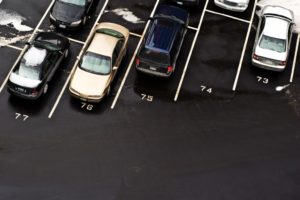- Replacing old double- or triple-pane windows can significantly reduce air leakage and energy costs.
- LED bulbs use up to 90% less energy than traditional incandescent lightbulbs and last longer.
- Unplugging appliances when not in use can help save electricity and prevent phantom energy loss.
- Utilizing power strips is an effective way to reduce energy usage and make your home more energy-efficient.
Making your home more energy-efficient is smart for your pocketbook and the environment. It can be easy to overlook small changes that add to significant savings. Still, with a few simple steps, you can simultaneously reduce your electricity bills and help protect our planet. With these tips, you will be well on your way toward creating an eco-friendly living space without sacrificing comfort or convenience!
Replace old windows
Replacing old windows with double or triple-pane windows is essential for making your home more energy-efficient. Doing so can significantly reduce air leakage, which will help keep temperatures within your home constant, thus decreasing the energy needed to maintain a comfortable temperature.
Additionally, the two or three layers of glass in modern windows increase the window’s insulation value and filter out noise, dust, and debris from the outside. When replacing older windows with new double or triple-pane replacements, ensure you choose a product that has quality seals and frames, as this will increase their durability and efficiency even further.
Use electricity wisely
Here are some tips on how you can use your electricity wisely:
Install energy-efficient lighting

Installing energy-efficient lighting such as LED bulbs is essential for anyone looking to make their home more energy-efficient. LED bulbs can save you up to 90% on your electrical bills compared to incandescent lightbulbs.
Switching to LED lighting helps reduce the strain on natural resources while giving you significant monthly savings! Not only this, but they also last longer, so they require less frequent replacement. Furthermore, these energy-efficient bulbs are as effective as regular bulbs in providing quality light and ambiance.
To properly install LED bulbs, ensure all fixtures are off before replacing the existing ones with new LED-compliant ones. As an added safety measure, use gloves or a cloth when screwing the new bulb into place to protect both the bulb and yourself from getting shocked by any electricity left in the fixture before it was switched off.
Unplug appliances when not in use.
Unplugging appliances when not in use is crucial to making your home more energy-efficient. AC and electronic devices often draw current even if turned off, allowing them to resume the same settings when power is restored quickly.
By unplugging these appliances, you can end what is known as “phantom energy loss” and substantially reduce your electricity bill. Unplugging appliances also prevents built-in self-activating operations from starting unexpectedly when the power comes back on. Additionally, it helps conserve energy globally by reducing the reliance on fossil fuels for energy production.
Use power strips
Power strips are an excellent way to reduce electricity usage in your home and make it more energy-efficient. Power strips provide a central connection point for multiple items while powering them off or killing the flow of electricity when not in use.
This eliminates the waste of electricity by avoiding the ‘standby’ mode that some electronics enter when plugged directly into power outlets, which can significantly increase energy costs, especially in larger homes. Not only does that save money on electricity bills, but it also reduces our collective carbon footprint.
Upgrade your HVAC system
A properly upgraded HVAC system is essential in making a home more energy-efficient. With the right model and professional technique, you can reduce your utility bills significantly, while also helping contribute to a greener planet. The amount of energy an HVAC system consumes makes it the biggest energy user in any household.
By bringing your current system up to date with a newer, more efficient model, you can make sure you are running on energy as efficiently as possible and keeping costs low. Even if your current model is considered ‘top of the line’ or even ‘one of the better ones’, chances are an updated version that is designed to be even more efficient than before exists.
Consider installing solar panels

Installing solar panels is an important step in making your home more energy-efficient. Solar panels can help generate clean, renewable energy, reducing the amount of electricity drawn from the grid and lowering your energy bill over time.
Research to determine if investing in a solar system would be cost effective for you in the long run; look into government incentives and tax credits, financing plans, and other pricing options to ensure it is a viable solution for your household.
Solar power has also proven to reduce carbon emissions, making it more environmentally friendly. As one of the most efficient energy sources available today, installing solar panels is a smart choice for any homeowner looking to reduce their costs while saving the environment at the same time.
These are just a few tips to help you make your home energy-efficient. Taking these steps now can provide long-lasting savings in money and energy while simultaneously helping reduce your environmental footprint.



















